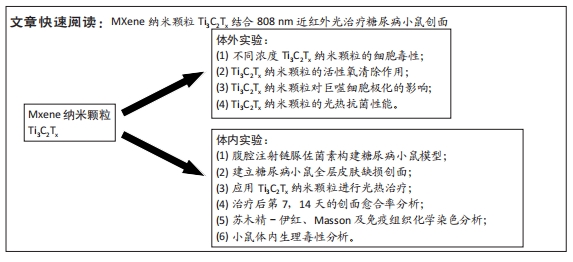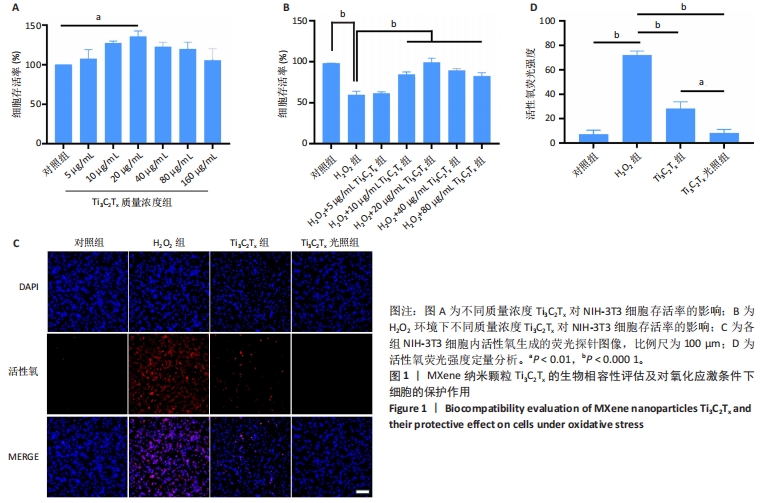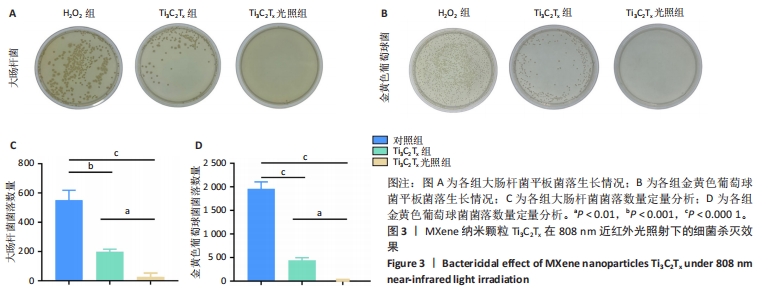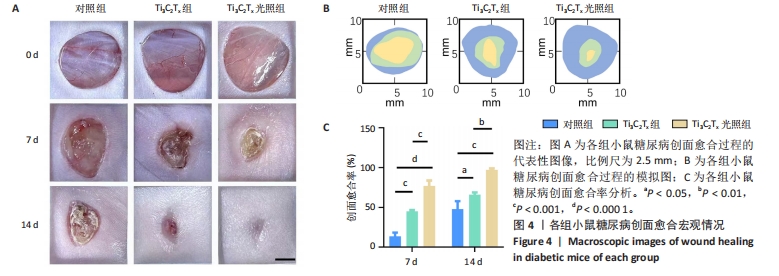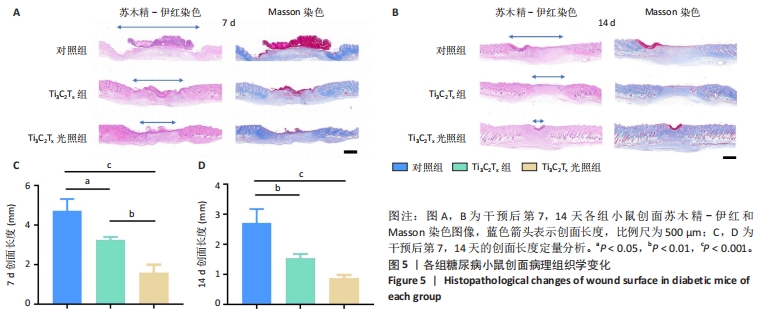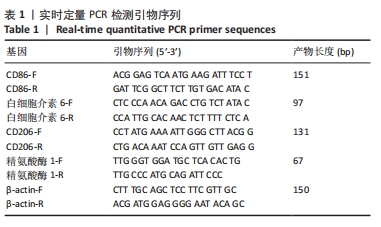[1] IM SH, KIM CY, JUNG Y, et al. Biodegradable vascular stents with high tensile and compressive strength: a novel strategy for applying monofilaments via solid-state drawing and shaped-annealing processes. Biomater Sci. 2017;5(3):422-431.
[2] OLSSON M, JÄRBRINK K, DIVAKAR U, et al. The humanistic and economic burden of chronic wounds: A systematic review. Wound Repair Regen. 2019;27(1):114-125.
[3] HOLL J, KOWALEWSKI C, ZIMEK Z, et al. Chronic Diabetic Wounds and Their Treatment with Skin Substitutes. Cells. 2021;10(3):655.
[4] GUILLAMAT-PRATS R. The Role of MSC in Wound Healing, Scarring and Regeneration. Cells. 2021; 10(7):1729.
[5] ALVEN S, ADERIBIGBE BA. Hyaluronic Acid-Based Scaffolds as Potential Bioactive Wound Dressings. Polymers (Basel). 2021;13(13):2102.
[6] DENG L, DU C, SONG P, et al. The Role of Oxidative Stress and Antioxidants in Diabetic Wound Healing. Oxid Med Cell Longev. 2021; 2021:1-11.
[7] SHI Z, GE Y, YUN Q, et al. Two-Dimensional Nanomaterial-Templated Composites. Acc Chem Res. 2022;55(24):3581-3593.
[8] NAGUIB M, GOGOTSI Y. Synthesis of Two-Dimensional Materials by Selective Extraction. Acc Chem Res. 2015;48(1):128-135.
[9] SANG X, XIE Y, LIN MW, et al. Atomic Defects in Monolayer Titanium Carbide (Ti3C2Tx) MXene. ACS Nano. 2016;10(10):9193-9200.
[10] AKUZUM B, MALESKI K, ANASORI B, et al. Rheological Characteristics of 2D Titanium Carbide (MXene) Dispersions: A Guide for Processing MXene. ACS Nano. 2018;12(3):2685-2694.
[11] JU X, KONG J, QI G, et al. A wearable electrostimulation-augmented ionic-gel photothermal patch doped with MXene for skin tumor treatment. Nat Commun. 2024;15(1):762.
[12] GAO F, XUE C, ZHANG T, et al. MXene‐Based Functional Platforms for Tumor Therapy. Adv Mater. 2023;35(51):2302559.
[13] AHAMED M, AKHTAR MJ, KHAN MAM, et al. Antibacterial, antifungal, and anticancer potential of two-dimensional Ti3C2Tx MXene. Mater Lett. 2022;327:133020.
[14] LIU X, XIE H, ZHUO S, et al. Ru(II) Complex Grafted Ti3C2Tx MXene Nano Sheet with Photothermal/Photodynamic Synergistic Antibacterial Activity. Nanomaterials (Basel). 2023;13(6):958.
[15] LIU Y, CHEN X, SUN J, et al. Large-scale production of MXene as nanoknives for antibacterial application. Nanoscale Adv. 2023;5(23): 6572-6581.
[16] LI T, MA J, WANG W, et al. Bioactive MXene Promoting Angiogenesis and Skeletal Muscle Regeneration through Regulating M2 Polarization and Oxidation Stress. Adv Healthc Mater. 2023;12(4):2201862.
[17] ZHU Y, MA X, LI L, et al. Surface Functional Modification by Ti3C2Tx MXene on PLLA Nanofibers for Optimizing Neural Stem Cell Engineering. Adv Healthc Mater. 2023;12(25):2300731.
[18] REN X, XIAO M, XU Y, et al. Injectable MXene conductive hydrogel improves myocardial infarction through scavenging ROS and repairing myocardium electrical integrity. Chem Eng J. 2024;481:148791.
[19] 张津,崔新刚,朱彦兆,等.姜黄素对糖尿病小鼠皮肤创面愈合的影响[J].医药导报,2024,43(2):167-174.
[20] MARTIN P, NUNAN R. Cellular and molecular mechanisms of repair in acute and chronic wound healing. Br J Dermatol. 2015;173(2):370-378.
[21] BURANASIN P, MIZUTANI K, IWASAKI K, et al. High glucose-induced oxidative stress impairs proliferation and migration of human gingival fibroblasts. PLoS One. 2018;13(8):e0201855.
[22] GONG F, ZHANG Y, CHENG S, et al. Inhibition of TGFβ1/Smad pathway by NF-κB induces inflammation leading to poor wound healing in high glucose. Cells Dev. 2022;172:203814.
[23] LIN X, SONG D, SHAO T, et al. A Multifunctional Biosensor via MXene Assisted by Conductive Metal–Organic Framework for Healthcare Monitoring. Adv Funct Mater. 2023:2311637.
[24] FENG J, LIU R, YUAN X, et al. MXene-enhanced ePatch with antibacterial activity for wound healing. Front Chem. 2023;11:1280040.
[25] HUANG Y, HE S, YU S, et al. MXene‐Decorated Nanofibrous Membrane with Programmed Antibacterial and Anti-Inflammatory Effects via Steering NF-κB Pathway for Infectious Cutaneous Regeneration. Small. 2024;20(4):2304119.
[26] SAHOO BM, BANIK BK, BORAH P, et al. Reactive Oxygen Species (ROS): Key Components in Cancer Therapies. Anticancer Agents Med Chem. 2022;22(2):215-222.
[27] LIU H, CHEN R, WANG P, et al. Electrospun polyvinyl alcohol-chitosan dressing stimulates infected diabetic wound healing with combined reactive oxygen species scavenging and antibacterial abilities. Carbohydr Polym. 2023;316:121050.
[28] LIU J, LU W, LU X, et al. Versatile Ti3C2Tx MXene for free-radical scavenging. Nano Res. 2022;15(3):2558-2566.
[29] CAI F, WANG P, CHEN W, et al. The physiological phenomenon and regulation of macrophage polarization in diabetic wound. Mol Biol Rep. 2023;50(11):9469-9477.
[30] GENG K, MA X, JIANG Z, et al. High glucose-induced STING activation inhibits diabetic wound healing through promoting M1 polarization of macrophages. Cell Death Discov. 2023;9(1):136.
[31] LI T, MA J, WANG W, et al. Bioactive MXene Promoting Angiogenesis and Skeletal Muscle Regeneration through Regulating M2 Polarization and Oxidation Stress. Adv Healthc Mater. 2023;12(4): 2201862.
[32] CHANG M, NGUYEN TT. Strategy for Treatment of Infected Diabetic Foot Ulcers. Acc Chem Res. 2021;54(5):1080-1093.
[33] HE X, KOO S, OBENG E, et al. Emerging 2D MXene for antibacterial applications: Current status, challenges, and prospects. Coord Chem Rev. 2023;492:215275.
[34] SEIDI F, ARABI SHAMSABADI A, DADASHI FIROUZJAEI M, et al. MXene Antibacterial Properties and Applications: A Review and Perspective. Small. 2023;19(14):2206716.
[35] FENG H, WANG W, WANG T, et al. Interfacial regulation of BiOI@Bi2S3/MXene heterostructures for enhanced photothermal and photodynamic therapy in antibacterial applications. Acta Biomater. 2023;171:506-518.
[36] HAN Z, DONG L, LI A, et al. Efficient angiogenesis-based wound healing through hydrogel dressing with extracellular vesicles release. Mater Today Bio. 2022;16:100427.
|
